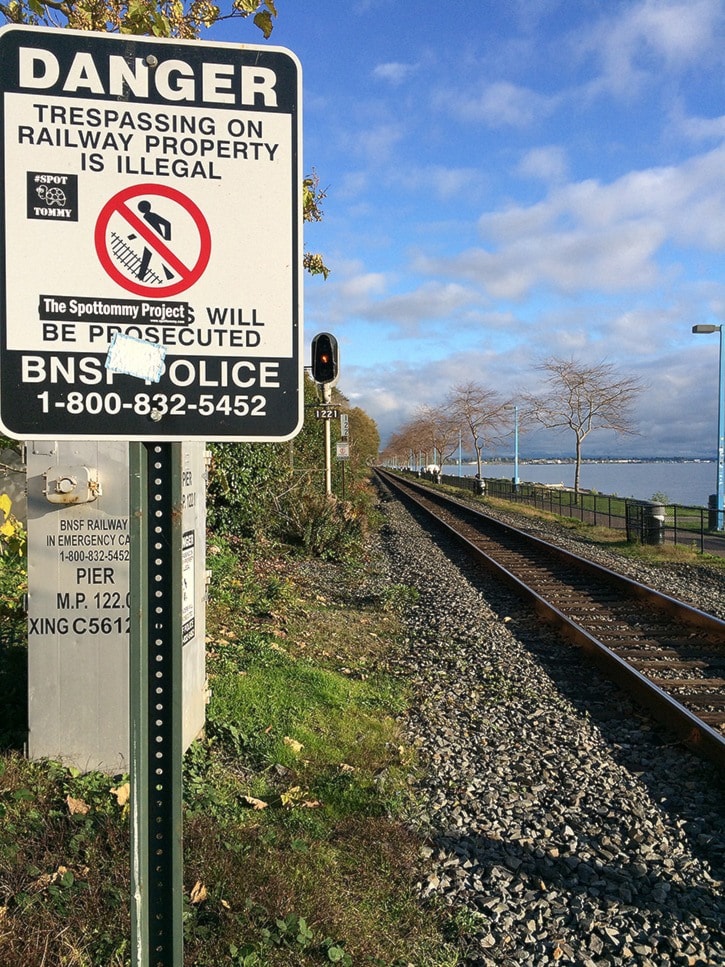Editor:
Re: Skepticism over rail relocation, Oct. 30 letters.
I wholeheartedly agree with letter-writer Ken Harrap and other previous information indicating the cost would be in the hundreds of millions of dollars to move the tracks away from White Rock and Crescent Beach.
BNSF has just invested several million rebuilding nearby bridges and re-tracking the area, so they will certainly not be shelling out any more money for such a move.
The citizens of White Rock and Surrey are already complaining about their taxes, so I can’t realistically see them voting for a massive tax increase. Thus the funds would need to come from the provincial and federal governments. With so many other far more important issues requiring many millions, if not billions, of dollars – such as our education system, health care, deteriorating infrastructure, needed transportation improvements, global warming and carbon emissions, etc. – this issue is clearly a non-starter in my mind.
In addition, any agreement to fund moving the rail line by the federal government would be an admission that current rail safety standards in Canada, which they created, are not adequate. How many hundreds of other communities would follow suit with similar requests?
Lastly, don’t be fooled by the interest and support expressed by our local politicians, as that was strictly an opportunity to gain votes. Any further studies on this matter, particularly one that costs $700,000, would be a complete waste of our tax dollars.
Tim Roark, Surrey
• • •
The letter by Ken Harrap twigged some thoughts.
Back in around 2003, Surrey identified a route inland. The problem is saving that corridor from development.
It doesn’t matter how long the railway has been in place, as nothing is written in stone. If we thought around those lines, we should give it all back to the natives.
Can you imagine how much it would cost to build a seawall along the tracks from White Rock, with all the equipment and time needed, plus the trains constantly going by at the same time? If the wall was ever built to allow emergency vehicles, it would take them forever to get to Crescent Beach when needed quickly, especially getting the folks already on that walkway to get out of the way. Where would they jump to?
To finish, there are many thousands of people who come to our beaches, not only from the Lower Mainland but from all over the world.
These folks are just as much to be effected by the trains, possibly leaving them with negative attitudes by the constant very loud noise by monsters charging past on a regular basis.
Brian Lauder, Surrey
Sound government
Re: Council sounds off, Nov. 4.
Really! You mention skateboards, motorcycles, construction and lawn mowers, but no mention of trains that wake us up at 6 a.m.?
Perhaps White Rock council should put their efforts into solving that problem – one that does have a solution and does not require relocating the tracks.
Relocation is, I suggest, foolhardy, as it should be preserved as a future transportation corridor when passenger trains will once again travel through White Rock on their way to the U.S.
So, yes, relocate the toxin-carrying trains but not the tracks.
Now, about those train noises.
Put up the required barriers/signals that Transport Canada has told you to do, and we can all enjoy peace and quiet in paradise. It’s not rocket science.
And with all the extra tax revenue you are creating permitting highrises everywhere, it is affordable.
We might lose our ocean view, but at least not our sleep.
Simon Bergen-Henengouwen, White Rock
Environment threat
The recently elected Liberal government pledged to increase Canada’s coastal marine protected areas from 1.3 per cent to five per cent by 2017 and 10 per cent by 2020.
Wouldn’t it be a feather in the Liberals’ cap if some of this marine-protected area is here in our own backyard?
Boundary Bay, along with the Serpentine estuary, are part of a complex West Coast ecosystem of international importance. Identified as World Heritage site number 243 by the Ramsar convention, the area provides feeding and roosting sites to about 250,000 migrating and wintering waterfowl and one million shorebirds.
Also, provincially and federally listed fish species of concern can be found within the estuarine habitats.
On the business side of things, this tidal basin provides for a vital local recreational, commercial and native crabbing industry.
This is all threatened because the main artery between Canada and the U.S. for moving goods – including dangerous goods, such as chlorine and ammonia – is a single rail track which winds its way along the edge of this environmentally sensitive area.
Let’s not wait until it is too late and the damage is done. Let’s ensure the protection of this pristine area by relocating the track to a more suitable, inland route as soon as possible.
Fiona Old, White Rock
